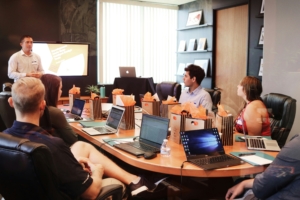Imagine a bustling kitchen in a high-end restaurant. The head chef stands at the center, orchestrating a symphony of sizzling pans, chopping knives, and fragrant aromas. Each sous-chef, line cook, and kitchen porter knows their role perfectly—at least in theory. But in this kitchen, there’s a problem. The staff is working in silos, each focused solely on their tasks without understanding how their work fits into the larger culinary masterpiece. The result? Dishes lack harmony, service is delayed, and the team is frazzled.
Now, picture a different scenario. This time, the head chef decides to change the game. Instead of issuing top-down orders, they gather the entire kitchen staff for a collaborative meeting. They discuss the menu, the vision for each dish, and how every ingredient and technique contributes to the final plate. The sous-chefs share insights on timing and flavor balancing, while the line cooks suggest new techniques. The kitchen porters, often overlooked, bring up issues with ingredient prep that had been slowing everyone down.
As the team starts to see the bigger picture, they begin to communicate more fluidly, helping each other out and offering feedback in real-time. The head chef continues to guide them, but now everyone is invested in the success of the meal. The dishes come out perfectly synchronized, each component enhancing the other. The dining room buzzes with satisfied customers, and the kitchen hums with a newfound sense of camaraderie and purpose.
This kitchen transformation is a metaphor for collaborative change management in organizations. Just as a successful kitchen requires the collective effort and understanding of its staff, organizational change thrives when employees at all levels are engaged and involved in the process. In both cases, the key to success lies in collaboration, communication, and a shared vision.
Collaborative change management recognizes that an organization is a complex system where changes in one part can ripple throughout the entire structure. By involving stakeholders from the beginning, leaders can uncover hidden issues, generate innovative solutions, and build a workforce that is not only prepared for change but also excited to drive it forward.
In this blog post, we’ll explore the principles of collaborative change management and offer actionable tips to help you implement this approach in your organization. Drawing from our experience, we’ll share how we navigate major transformations by weaving collaboration into every phase of the change process. From assessing the current state and identifying hidden problems to co-creating solutions and ensuring sustained success, collaboration is always our mandate.
Section 1: Understanding Collaborative Change Management
Collaborative change management is about moving away from the traditional top-down approach where a few leaders make decisions that trickle down through the ranks. Instead, it embraces the idea that those most affected by the change should have a hand in shaping it. This approach not only makes the change more effective but also ensures that it is sustainable in the long run. When people are involved in the process, they are more likely to support and champion the change, reducing resistance and chaos.
Why is collaboration crucial in change initiatives? To answer that, let’s return to our kitchen analogy. Imagine a chef trying to whip up a  gourmet dish without tasting it along the way, relying solely on a recipe. They might end up with a dish that looks good on paper but tastes bland or unbalanced because they didn’t check in with their taste buds—or in an organizational sense, their people. Collaboration in change management is like tasting the dish as you go. It allows for adjustments, refinements, and improvements based on real-time feedback from those who are closest to the action.
gourmet dish without tasting it along the way, relying solely on a recipe. They might end up with a dish that looks good on paper but tastes bland or unbalanced because they didn’t check in with their taste buds—or in an organizational sense, their people. Collaboration in change management is like tasting the dish as you go. It allows for adjustments, refinements, and improvements based on real-time feedback from those who are closest to the action.
In an organization, change often brings uncertainty and resistance. People naturally fear the unknown and are hesitant to let go of what they know. By involving them in the process, you can ease these fears and reduce resistance. When employees feel heard and valued, they are more likely to embrace change rather than push back against it. Collaboration helps to demystify the change process, turning it from something that’s done to employees into something they are actively participating in.
Moreover, collaboration taps into the collective intelligence of the organization. No single leader, no matter how experienced, can fully grasp all the intricacies of an organization, especially as it grows larger and more complex. Front-line employees, middle managers, and other stakeholders often have valuable insights that can help shape a more effective change strategy. By bringing these voices into the conversation, organizations can create change initiatives that are more thoughtful, inclusive, and better aligned with the actual needs of the workforce.
Organizations are complex, interconnected systems where changes in one area can create ripples throughout the entire structure. For example, implementing a new software system to streamline operations might seem like a straightforward change, but it could impact everything from data sharing to process handoffs across the organization. If the change is rolled out without input from all affected parties, you might end up with a system that creates more problems than it solves—perhaps slowing down processes, confusing employees, or disrupting workflows.
This is where collaborative change management shines. By involving stakeholders from different parts of the organization, you can anticipate these ripple effects and address them before they become issues. When you view the organization as a system, you recognize the importance of understanding how each part connects to the whole, and collaboration becomes the tool that ensures harmony across the board.
Once an organization reaches a certain size, it becomes impossible for a single leader—or even a small group of leaders—to understand all the nuances of the organization. Think about a massive cruise ship. The captain might steer the ship, but they rely on a whole crew to navigate, maintain the engines, and ensure the passengers are taken care of. The captain can’t be everywhere at once, and they certainly can’t know the intricacies of every single task being performed. Similarly, in a large organization, a top-down approach to change management can lead to unseen gaps and missed opportunities because the people making decisions aren’t always in touch with the day-to-day realities of the front-line workers.
Collaborative change management addresses this limitation by ensuring that planning and implementation incorporate insights from across the organization. This approach helps to capture the nuance that a top-down approach might miss. For instance, front-line employees might be the first to spot inefficiencies in a new process or potential issues with a new system. By involving them in the change process, you can catch these problems early and make adjustments before they become larger issues.
To succeed with collaborative change management, it’s not enough to simply invite people to the table; you need to foster a culture of collaboration where everyone feels comfortable sharing their thoughts and ideas. This means creating an environment where employees at all levels are encouraged to speak up, where diverse perspectives are valued, and where leaders actively listen to feedback.
One way to build this culture is by setting up regular forums for discussion and feedback.  These could be town hall meetings, smaller team huddles, or even digital platforms where employees can share their thoughts anonymously. The key is to create multiple channels for communication so that everyone has a voice. Transparency is also critical. When employees understand the “why” behind the change, they are more likely to get on board. Leaders should clearly communicate the goals of the change initiative, how it aligns with the organization’s vision, and how it will benefit both the organization and the employees.
These could be town hall meetings, smaller team huddles, or even digital platforms where employees can share their thoughts anonymously. The key is to create multiple channels for communication so that everyone has a voice. Transparency is also critical. When employees understand the “why” behind the change, they are more likely to get on board. Leaders should clearly communicate the goals of the change initiative, how it aligns with the organization’s vision, and how it will benefit both the organization and the employees.
While collaboration involves everyone, leaders still play a crucial role in guiding the process. They act as facilitators who bring people together, ensure that all voices are heard, and keep the process on track. Leaders also need to model the behavior they want to see. If they expect collaboration, they need to be collaborative themselves—seeking input, being open to feedback, and showing that they value the contributions of others.
Of course, collaborative change management isn’t without its challenges. One common issue is the potential for conflict when different stakeholders have competing interests or ideas. However, these conflicts can lead to better outcomes if they are discussed openly and constructively. Another challenge is ensuring that the process doesn’t become bogged down by too many voices or opinions. Leaders need to strike a balance between inclusivity and efficiency, ensuring that everyone has a chance to speak but also moving forward once a decision has been made.
Finally, there’s the challenge of maintaining momentum. Change initiatives can take time, and enthusiasm can wane. Leaders can counteract this by celebrating small wins, keeping communication lines open, and reminding everyone of the long-term benefits of the change.
In the end, whether you’re running a kitchen or a corporation, the key to success is the same: work together, communicate openly, and never lose sight of the bigger picture. When everyone is invested in the process, the results are transformative.
Section 2: Key Phases of Collaborative Change Management
Collaborative change management isn’t just a buzzword—it’s a practical approach inspired by principles from design thinking and human-centered design. These concepts, which have transformed industries like technology and product development, are equally powerful when applied to organizational change. The essence of design thinking lies in empathy, collaboration, and iterative testing—principles that align perfectly with the goals of effective change management. Human-centered design focuses on understanding and addressing the needs of the people who will be impacted by the change. By combining these approaches, collaborative change management ensures that changes are not just implemented but embraced, resulting in sustainable transformation.
It’s important to note that collaborative change management isn’t a standalone methodology; rather, it’s a framework that can be layered onto any existing change management methodology. Whether your organization follows ADKAR, Kotter’s 8-Step Process, or any other change model, the collaborative approach enhances the effectiveness of your efforts by ensuring that all stakeholders are engaged and invested throughout the process.
Let’s explore how the principles of design thinking and human-centered design are woven into the three key phases of collaborative change management: Assessing, Solutioning, and Implementation.
Phase I: Assessing
 The first phase of any change initiative is the assessment phase, which is foundational to the entire process. Think of this phase as the “empathize” and “define” stages in design thinking, where you seek to understand the current state of the organization and define the challenges that need to be addressed.
The first phase of any change initiative is the assessment phase, which is foundational to the entire process. Think of this phase as the “empathize” and “define” stages in design thinking, where you seek to understand the current state of the organization and define the challenges that need to be addressed.
Conducting a thorough assessment is akin to laying the groundwork for a complex design project. Without a deep understanding of the context, needs, and challenges, any solution you come up with is likely to fall short. This phase goes beyond simply collecting data. It’s about engaging with the people who are part of the system—those who will be impacted by the change. This engagement is where the principles of human-centered design come into play. By focusing on the experiences and needs of the workforce, you can uncover insights that might otherwise be overlooked.
In our kitchen metaphor, this would be like understanding not just the ingredients you have but also how each team member works with those ingredients, what challenges they face, and what could help them work more effectively.
A crucial step in this phase is grounding the process in the Commander’s Intent. In military operations, the Commander’s Intent is a clear and concise statement of the desired outcome. In collaborative change management, grounding the process in the Commander’s Intent means starting with a deep understanding of leadership’s vision and goals for the change initiative. This clarity ensures that the change initiative remains focused and aligned with the organization’s long-term goals, even as it evolves.
Once the Commander’s Intent is established, the next step in the assessment phase is to gather qualitative data from all stakeholders. This is where the principles of empathy from design thinking really come into play. Through interviews, focus groups, and other qualitative methods, you can tap into the lived experiences of the workforce. This isn’t just about collecting opinions; it’s about deeply understanding the needs, concerns, and aspirations of those who will be affected by the change.
This phase is also where you identify unseen gaps and barriers to change. For instance, in one organization, we discovered that employees had a limited understanding of how their individual tasks fit into the larger process. This lack of a holistic view was a significant barrier to effective change, but it wasn’t something that leadership had initially recognized. By uncovering these hidden challenges early on, you can address them proactively in the next phase, ensuring a smoother transition.
Phase II: Solutioning
 With a clear understanding of the organization’s current state and the challenges ahead, it’s time to move into the solutioning phase. This phase aligns with the “ideate” and “prototype” stages of design thinking, where creativity, collaboration, and iteration are key.
With a clear understanding of the organization’s current state and the challenges ahead, it’s time to move into the solutioning phase. This phase aligns with the “ideate” and “prototype” stages of design thinking, where creativity, collaboration, and iteration are key.
In the solutioning phase, the use of collaborative tools and techniques is essential. This is where the creative power of the organization is unleashed, as employees from different levels and functions come together to brainstorm, design, and refine potential solutions. Think of this as the team coming together in the kitchen to design the new menu. Everyone has a say, from the head chef to the line cooks, and together they craft dishes that are innovative, cohesive, and aligned with the restaurant’s vision.
In an organizational context, collaborative tools might include workshops, design thinking sessions, or digital platforms where ideas can be shared, discussed, and iterated upon. The key is to create an environment where creativity can flourish and where the best ideas can rise to the top. By using these tools, you ensure that the solution isn’t just dictated from above but is co-created with those who will be implementing it.
For example, with a recent client, we held solutioning workshops where employees from different departments worked together to design new processes that would address the challenges identified in the assessment phase. This collaborative approach ensured that the solutions were practical, innovative, and aligned with the organization’s goals. It also brought to light several secondary and tertiary issues with implementation that hadn’t been considered. It’s like having a team of sous-chefs who each bring their expertise to the table, ensuring that the final dishes reflect the best of everyone’s ideas.
One of the most powerful tools in this phase is the Change Agent Network. This network acts as a bridge between leadership and the rest of the workforce, ensuring that communication flows smoothly in both directions and that feedback is continuously gathered and incorporated.
Change agents are like the sous-chefs in our kitchen metaphor—they have a deep understanding of the vision but are also closely connected to the day-to-day operations. They gather feedback, share updates, and help to align the solutions with both the leadership’s goals and the workforce’s needs. In GovOrg, the Change Agent Network was instrumental in facilitating discussions and ensuring that the solutions were not only aligned with leadership’s vision but also embraced by the workforce.
While collaboration is key, it’s also important to ensure that the solutions align with the leadership’s goals—the Commander’s Intent. This doesn’t mean simply deferring to leadership; it means integrating their vision with the practical realities and insights gathered from the workforce. It’s like balancing the head chef’s vision with the practical suggestions from the rest of the team.
This balance is crucial for ensuring that the change is not only implemented but also sustained over the long term.
Phase III: Implementation
 The final phase is implementation, where the solutions crafted in the solutioning phase are put into action. This phase corresponds to the “test” and “implement” stages in design thinking, where ideas are brought to life and refined based on real-world feedback.
The final phase is implementation, where the solutions crafted in the solutioning phase are put into action. This phase corresponds to the “test” and “implement” stages in design thinking, where ideas are brought to life and refined based on real-world feedback.
Even though the solution has been designed, the collaborative process doesn’t end here. Involving stakeholders in the implementation process is crucial for ensuring that the change is embraced and sustained. This might involve pilot programs, phased rollouts, or regular check-ins to gather feedback and make adjustments as needed.
With a recent client, for example, the implementation phase involved setting up cross-functional teams to oversee different aspects of the rollout. These teams included members from various departments, ensuring that the change was integrated smoothly across the organization. It’s like having different stations in the kitchen, each responsible for a different part of the meal, but all working together to deliver a seamless dining experience.
Continuous engagement and feedback are essential during implementation. Change isn’t a one-time event—it’s a process that requires ongoing adjustment and refinement. By keeping the lines of communication open, you can address issues as they arise and keep the momentum going.
Regular feedback sessions during the implementation phase helped identify and resolve issues before they became major problems. Employees felt heard and supported, which reduced resistance and kept the project on track. It’s like having regular taste tests during cooking—making sure the flavors are balanced and adjusting as needed to ensure a perfect final dish.
One of the most powerful outcomes of collaborative change management is that it creates a culture of continuous improvement. Even after the initial change initiative is complete, employees remain engaged and motivated to keep pushing the organization forward.
This sustained success was evident in the way employees continued to drive change long after the official project had ended. Despite being overworked, they were committed to seeing the change through because they had been involved from the start. The trust and momentum built during the process carried them through, leading to ongoing improvements and a more resilient organization.
By aligning the phases of collaborative change management with the principles of design thinking and human-centered design, organizations can create change initiatives that are not only successful but also sustainable. Whether you’re assessing the current state, co-creating solutions, or implementing new processes, the key to success lies in collaboration, communication, and a shared commitment to the organization’s goals. Just like in our kitchen, where every dish is a team effort, every successful change is the result of collective creativity and shared responsibility.
Section 3: Actionable Tips for Effective Collaborative Change Management
Let’s now dive into practical strategies to implement collaborative change management in your organization. The beauty of this approach lies in its adaptability—it’s not a rigid formula but a flexible approach that can be tailored to fit your unique organizational needs.
Engage Early and Often
- Start involving employees from the beginning to build a coalition of support.
- Use interviews, focus groups, and surveys to gather comprehensive input from a broad cross-section of your workforce.
Create a Change Agent Network
- Establish a network to facilitate two-way communication between leadership and the workforce.
- Empower change agents to gather and relay feedback, creating a dynamic, responsive change process.
Foster a Culture of Open Communication
- Promote transparency and openness in all communications.
- Create structured opportunities (town halls, suggestion boxes, forums) for employees to share ideas and voice concerns.
Align Leadership Goals with Workforce Input
- Use leadership goals as a guide but remain flexible to incorporate workforce suggestions.
- Balance strategic objectives with practical realities to create a plan that is both effective and achievable.
Implement Incremental Changes and Gather Feedback
- Pilot new processes or tools in controlled environments to test and refine before scaling up.
- Use feedback to continuously improve solutions, ensuring a responsive and adaptive change process.
Build Trust and Commitment
- Involve employees in decision-making processes to build ownership and commitment.
- Acknowledge and address barriers to success to demonstrate leadership’s commitment to supporting employees.
Section 4: Benefits of Collaborative Change Management
Here’s a look at the tangible benefits of collaborative change management, illustrated by the real-world example of our recent client.
Immediate Impacts:
- Increased Engagement: Employees feel a sense of ownership and responsibility for the change process, leading to higher motivation and better performance.
- Investment in Change: Engaged employees become ambassadors for the initiative, advocating for change and reducing resistance.
Long-Term Advantages:
- Sustained Success: Continuous engagement fosters long-term momentum, ensuring changes are maintained and integrated into the organizational culture.
- Reduced Resistance to Future Changes: Employees who have been involved in successful changes are more open to future initiatives.
- Culture of Innovation: Empowered employees see themselves as agents of change, driving ongoing improvements and fostering a proactive, innovative workforce.
Real-World Example: GovOrg’s Success
- Challenge: Our client faced significant challenges in its procurement processes, with a lack of standardization and communication gaps.
- Collaborative Approach: We conducted a thorough assessment, engaged employees in solutioning workshops, and piloted new processes.
- Immediate and Long-Term Benefits: Employee engagement soared, resistance was minimized, and the organization continued to evolve and adapt even after the project’s completion, driven by a culture of continuous improvement.
Conclusion
As we’ve explored, collaboration is the linchpin of successful organizational change. By embracing collaborative change management, you’re not just implementing a new process—you’re transforming the way your organization operates. This approach fosters engagement, innovation, and sustained success, ensuring that change is something done with people, not to them.
Whether you’re leading a small team or a large organization, the benefits of collaboration are within your reach. Engage with your workforce, foster open communication, and build a culture of trust and commitment. Our experience helping our clients illustrates how powerful collaboration can be in driving both immediate and long-term success.
Call to Action
Ready to bring collaborative change management to your organization? Download our Change Agent Network Charter template and start building a coalition of support for your next change initiative.
Click here to submit your questions or share your stories for future blog posts. Let’s work together to create a future where change is embraced with confidence and creativity.




